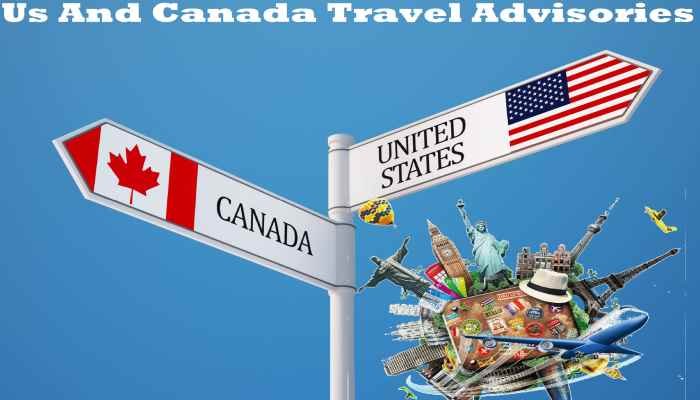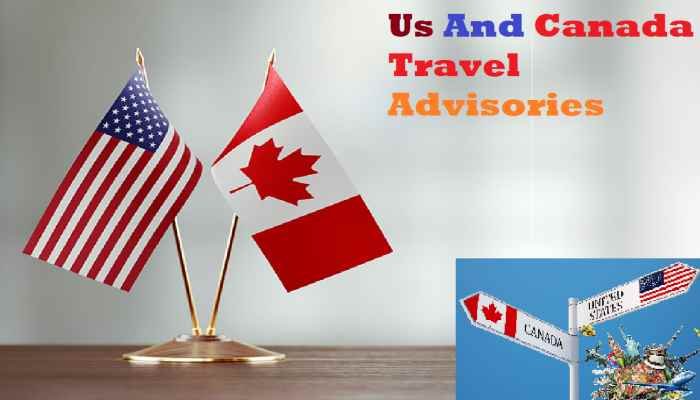
Us And Canada Travel Advisories Updates for Global Trips
Introduction: Us And Canada Travel Advisories Updates
The US and Canada travel advisories have been updated to reflect new political situations, natural disasters, health outbreaks, and regional conflicts. Governments regularly issue these advisories to help protect citizens traveling abroad. In this article, we will discuss how these advisories work, what the latest changes are, and how you can stay safe.
What Are Travel Advisories?
Travel advisories are official warnings or recommendations given by a government. These warnings tell travelers about the risks in other countries. These risks can include:
-
Political instability
-
Natural disasters
-
War or terrorism
-
Health risks like diseases
-
Crime levels
Both the United States Department of State and Global Affairs Canada issue regular updates.
Why Us And Canada Travel Advisories Matter
Travel advisories help travelers make smart decisions. They give you time to prepare. They also help you avoid danger. If you ignore them, you might face problems like:
-
Denied insurance claims
-
Being stuck in a conflict zone
-
Missing embassy help
Travel advisories also affect travel insurance and flight availability.
US Travel Advisory Levels Explained
The US Department of State uses a four-level system:
-
Level 1 – Exercise Normal Precautions
-
Safe to travel with standard caution.
-
-
Level 2 – Exercise Increased Caution
-
Be aware of specific risks.
-
-
Level 3 – Reconsider Travel
-
High risk. Travel only if necessary.
-
-
Level 4 – Do Not Travel
-
Very dangerous. Avoid all travel.
-
Also Read: Luhxe Travel Bag: Review, Stylish, & Durable for Every Trip
Canada Travel Advisory Levels Explained
Canada’s system is slightly different. It uses four categories:
-
Exercise Normal Security Precautions
-
Exercise a High Degree of Caution
-
Avoid Non-Essential Travel
-
Avoid All Travel
Canadian advisories are issued by Global Affairs Canada. These are based on reliable intelligence and events around the world.
Recent US Travel Advisory Updates
Here are some of the latest updates from the US government:
-
Russia: Remains Level 4 – Do Not Travel due to ongoing conflict.
-
Ukraine: Still Level 4 – Do Not Travel because of war.
-
Israel and Gaza: Marked Level 4 – Do Not Travel due to recent violence.
-
Haiti: Level 4 – Do Not Travel due to kidnappings and political unrest.
-
Mexico (some areas): Varies by state. Some are Level 3 or 4 due to crime.
Always check the US State Department website before booking flights.
Recent Canada Travel Advisory Updates
Here’s what Canada recommends:
-
Haiti: Avoid All Travel due to civil unrest and crime.
-
Iran: Avoid Non-Essential Travel due to security risks.
-
Lebanon: Avoid All Travel in southern regions near the border.
-
Russia: Avoid All Travel, especially for dual citizens.
-
Mexico: Exercise a High Degree of Caution in many areas.
These advisories are based on recent news and intelligence reports.
Health Advisories: COVID-19 and More
Health risks are still a major part of us and canada travel advisories. Here are key updates:
-
COVID-19: Most countries have lifted restrictions. But some may still require vaccines or testing.
-
Dengue Fever: Rising cases in Central America and Asia. Take precautions.
-
Malaria: Still active in parts of Africa and South America.
-
Bird Flu: Monitored in Southeast Asia.
Check CDC (Centers for Disease Control) or Canada’s Public Health Agency before international travel.
How to Check US and Canada Travel Advisories
Use these official websites:
-
US Travelers: https://travel.state.gov
-
Canadian Travelers: https://travel.gc.ca
These websites let you:
-
Search advisories by country
-
Get emergency contacts
-
Register travel plans
-
Subscribe to updates
Travel Tips Based on Advisory Levels
If Your Destination Is Level 1 or Normal Precaution:
-
Still research local laws
-
Stay aware of your surroundings
-
Carry copies of your documents
If Your Destination Is Level 2 or High Degree of Caution:
-
Avoid protests or large gatherings
-
Use only trusted transport services
-
Keep embassy numbers with you
If Your Destination Is Level 3 or 4:
-
Reconsider your trip
-
Have a backup plan
-
Understand that help may be limited
What to Do Before Traveling During Advisories
-
Buy Travel Insurance
-
Ensure it covers emergency evacuation.
-
-
Register with Government Services
-
US: Smart Traveler Enrollment Program (STEP)
-
Canada: Registration of Canadians Abroad
-
-
Talk to Your Doctor
-
Get required vaccines or medicines.
-
-
Prepare Documents
-
Passport copies
-
Emergency contacts
-
Local addresses
-
Emergency Numbers and Contacts
US Citizens Abroad
-
US Embassy Help: +1-202-501-4444
-
Website: travel.state.gov
Canadian Citizens Abroad
-
Global Affairs Emergency Centre: +1-613-996-8885
-
Website: travel.gc.ca
Save these before your trip.
How Travel Advisories Affect Flights and Insurance
When the government issues a Level 3 or 4 advisory, airlines may cancel flights. Insurance companies may also refuse claims if you ignore warnings. Always check your policy details. Some insurance may allow for “cancel for any reason” (CFAR) coverage.
How To Stay Updated While Abroad
Use these tools:
-
Google Alerts for your destination
-
Embassy newsletters
-
Travel advisory apps
-
Local news channels
Also follow US Embassy Twitter/X accounts or Canadian embassies for real-time alerts.
Us And Canada Travel Advisories

LGBTQ+ Travelers
Some countries have strict laws. The US and Canada often include warnings if local laws may impact LGBTQ+ travelers. Check ahead.
Dual Citizens
Countries like Iran or Russia may not recognize dual nationality. You may face risks of arrest or travel restriction.
Traveling with Children
Make sure you have:
-
Parental consent letters
-
School records if needed
-
Proper identification
Some countries have strict entry rules for minors.
What to Do If You Are Caught in a Crisis Abroad
-
Contact your embassy immediately
-
Follow local authority instructions
-
Avoid social media arguments or protests
-
Keep family informed
-
Stay calm and safe
Embassies help with evacuations, lost passports, or arrests, but their support may be limited.
Also Read: Hale Koa: The Hidden Gem of Waikiki for Military Families 2025
Conclusion: Stay Informed, Stay Safe
Travel can be fun, but it also involves risks. The us and canada travel advisories are there to keep you safe. Always check them before you travel. Stay updated, be prepared, and take smart steps.
Whether you’re flying for fun, family, or business, awareness is the key to safety.
Frequently Asked Questions (FAQs)
1. How often are US and Canada travel advisories updated?
Both governments update them as needed. Some countries are reviewed monthly. Big events can cause daily updates.
2. Can I travel to a Level 4 country if I want to?
Yes, but it’s strongly discouraged. Your government may not help in case of trouble.
3. Are travel advisories the same as travel bans?
No. Advisories are warnings. Bans are legal restrictions. Advisories suggest avoiding, but bans block travel.
4. Do travel advisories affect visa applications?
Not directly. But high-risk areas may lead to longer visa processing times.
5. How can I stay safe if I must travel to a risky area?
Register your travel, follow embassy advice, stay in safe zones, and avoid risky activities.




